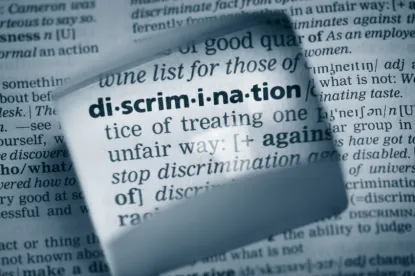On September 7, 2016, the California Department of Fair Employment and Housing (“DFEH”) announced modifications to its proposed regulations originally promulgated on February 19, 2016, governing the use of criminal history in employment decisions. The new regulations are intended to prevent disparate impact discrimination against protected classes such as gender, race, and national origin. If passed, the new modified regulations will impose more restrictions on employers, including a burden shifting test.
The September 2016 proposed regulations provide that a policy or practice of basing employment decisions on criminal records having an “adverse impact” on an applicant or employee must be “both job-related and consistent with business necessity.”
The Applicant or Employee’s Burden: “Adverse Impact”
Under the proposed regulations, the applicant or employee must show “adverse impact.” “Adverse impact” is defined as “disparate impact” under the EEOC (i.e., a disproportionately adverse effect on members of a protected class compared to non-members of the class). The proposed regulations add that, if the applicant or employee can show “substantial disparities in the conviction records of one or more” protected categories such as gender, race, or national origin, those statistics are “presumptively sufficient to establish an adverse impact.”
The Employer’s Burden: Job Relationship and Business Necessity
Under the proposed regulations, once the affected individual shows adverse impact, the burden shifts to the employer to prove the decision is both job-related and consistent with business necessity. The employer must show the policy or practice bears a “demonstrable relationship to successful performance on the job and in the workplace and measure the person’s fitness for the specific job, not merely to evaluate the person in the abstract.”
To establish job-relatedness and business necessity, the employer must demonstrate that the policy or practice is “appropriately tailored to the job for which it is used as an evaluation factor.” This requires taking into account at least the following three factors:
(1) the nature and gravity of the offense;
(2) the time passed since the offence or completion of the sentence; and
(3) the nature of the job held or sought.
The employer must also use one of the two following tests to determine whether the policy or practice is “appropriately tailored:”
(1) a “bright-line, across the board” conviction disqualification which would not depend on individual circumstances; or
(2) an individualized assessment of the circumstances and qualifications of the individuals excluded by the conviction screen.
Under the “bright line” test, the employer must show (1) that its test can properly distinguish between individuals who do and do not pose an unacceptable level of risk, and (2) that the convictions being used as the basis have a direct and specific negative bearing on the person’s ability to perform the duties or responsibilities necessarily related to the employment position. The “bright line” test is subject to a rebuttable presumption if the conviction is over 7 years old.
Under the individualized assessment method, the employer must investigate the circumstances or qualifications of individuals excluded by the conviction screen. After conducting the individualized assessment, the employer must then take three additional steps:
(1) provide specific notice to the affected individuals that they have been screened out because of a criminal conviction;
(2) provide a reasonable opportunity for the individuals to demonstrate that the exclusion should not be applied to their particular circumstances; and
(3) consider any additional information provided.
Under both the “bright-line” and “individualized assessment” tests, the employer must give impacted individuals notice of the disqualifying conviction and a reasonable opportunity to present evidence that the information is factually inaccurate. If inaccuracy is demonstrated, that record cannot be used in an employment decision.
The inquiry does not end there. Even if an employer demonstrates that its policy or practice is job-related and consistent with business necessity, impacted individuals may still prevail if they can demonstrate that there is a less discriminatory policy or practice that serves the employer’s goals as effectively as the conviction screen. These may include, for example, a more narrowly targeted list of convictions or another form of inquiry that evaluates job qualification or risk as accurately without significantly increasing the cost or burden on the employer.




 />i
/>i

